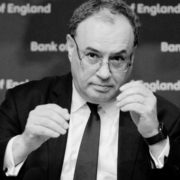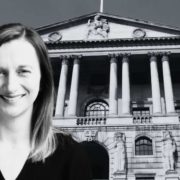One of the dilemmas for the Bank of England, as it responds to a surge in inflation which has made a mockery of the official 2% target it is meant to achieve, is that interest rates do not act as quickly as they used to do.
Many people will remember the days when each change in the official interest rate, Bank Rate, brought a letter through the post from the bank or building society notifying a change in monthly mortgage payments.
Most people back then, in the 1980s and 1990s, were on variable rate mortgages, and those variable rates moved in tandem with the official interest rate.
A button pressed in the Bank of England, although usually in those days on the instruction of the chancellor, had an immediate effect on the finances of millions of households up and down the land, as it did on businesses.
Mortgage rates were highly politically sensitive, which is why when the decision was taken 25 years ago to hand over control of interest rates to the Bank, it was controversial.
Could unelected officials be trusted on something arguably more sensitive and important than changes in tax?
But the deed was done and, perhaps fortunately for the Bank, the past quarter-century has seen profound structural changes in the mortgage market.
The latest figures from the Financial Conduct Authority (FCA) show that in the final three months of last year, more than 94% of new mortgages were on fixed rates.
That is roughly double the share in the early 2010s, immediately after the global financial crisis.
In early 2010, the low point, the fixed-rate share dropped to just 37%.
The Bank is heading for another rate hike on May 7, which will be the first time it has raised rates at four successive meetings since being granted independence in May 1997.
So, given the shift to fixed-rate mortgages, which will mean that many people will not see the effects for quite some time, how big will the impact be?
According to two new assessments by market-watchers, even if the effect is less direct than it used to be, it will still be important.
Samuel Tombs of Pantheon Macroeconomics, in a note to clients headed ‘Rising mortgage rates will soon call time on rapid house price gains’, wrote that the rate on a two-year 75% loan-to-value mortgage rose by 35 basis points (0.35%) last month to 2.11%, and is set to increase to 2.7% by the end of the year.
“That wouldn’t overburden households immediately, as 82% of the stock of mortgage debt is fixed rate,” he pointed out, reinforcing the argument above.
“But” he also noted, the further rise in new mortgage rates we expect points to a sharp deceleration in year-over-year growth in house prices ahead.
It won’t be long, therefore, before the housing market comes off the boil.”
There is a similar view from the Centre for Economics and Business Research (CEBR), in its latest Housing Prospects forecasts.
The strong momentum for the market in recent weeks has led the firm to revise up its house price forecast for the whole of 2022, from 3.8% to 4.8%.
Even this, you will have noticed, implies a significant slowdown in house-price inflation over the rest of the year.
And, according to the CEBR, this will give way to more pronounced weakness next year.
As it puts it: “Our forecasts now point to a 2.0% annual house price contraction in 2023, compared to the previously expected 0.6% downtick.
This revision reflects the robust responsiveness of mortgage rates to recent interest rate rises, an anticipated intensification of the cost-of-living crisis, and an expected uptick in unemployment over the remainder of the year.”
This year’s strength will mean weakness next year.
What should we make of this?
The housing market in general, and house prices in particular, have beaten expectations for a long time now.
And, while rising mortgage rates are clearly not a boon for the market, there is clearly a debate to be had on how powerful their cooling effect is.
Even a modest annual house price fall, as envisaged by the CEBR, is a rarity in the UK.
It has only happened three times in the past 35 years.
Two of those occasions were during and immediately after the global financial crisis, with the other in the early 1990s’ recession.
I would be cautious, therefore, to expect it to happen again next year.
There will be a cooling, certainly.
But whether that cooling will be sufficient to push the market over the edge is another matter.

























Comments